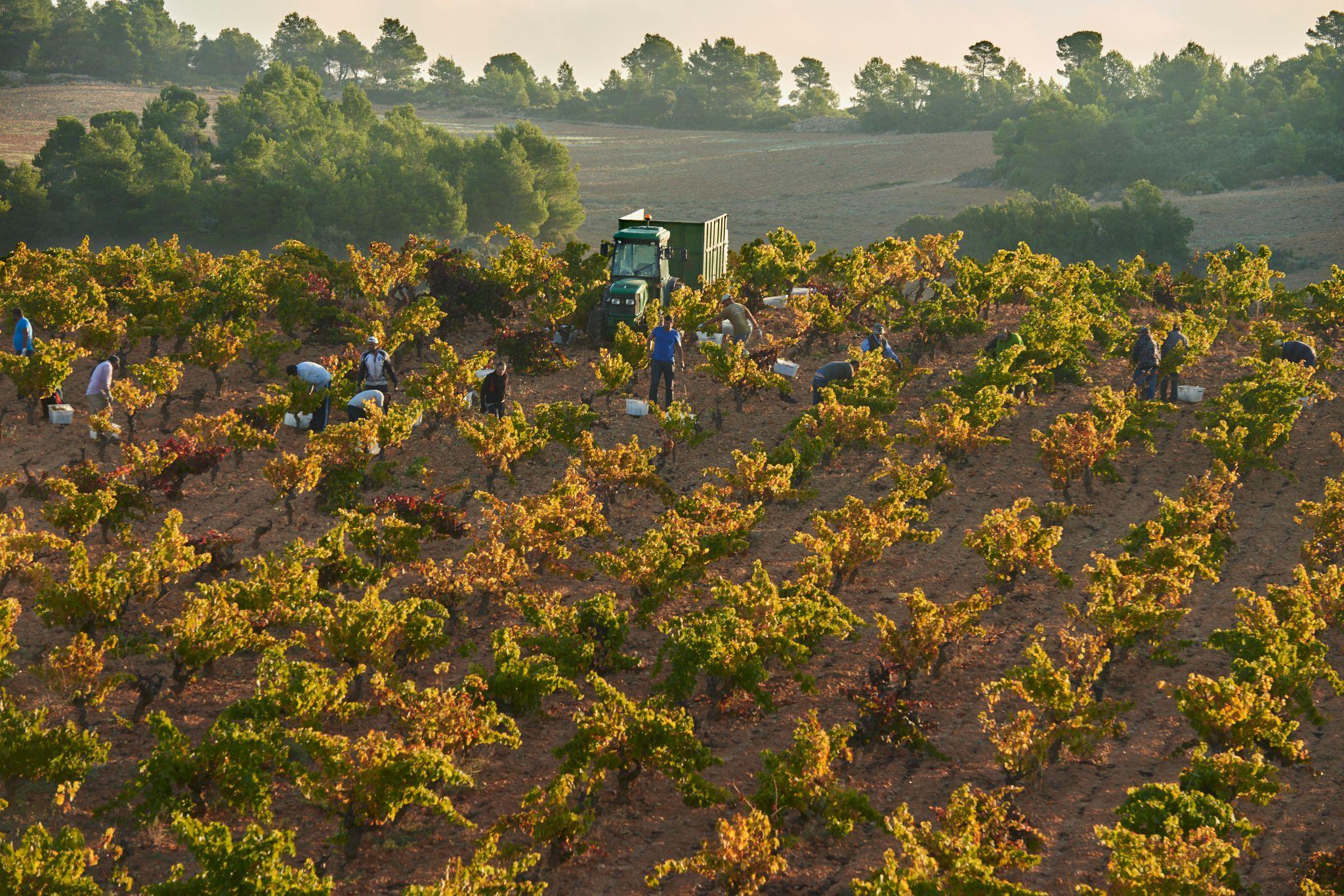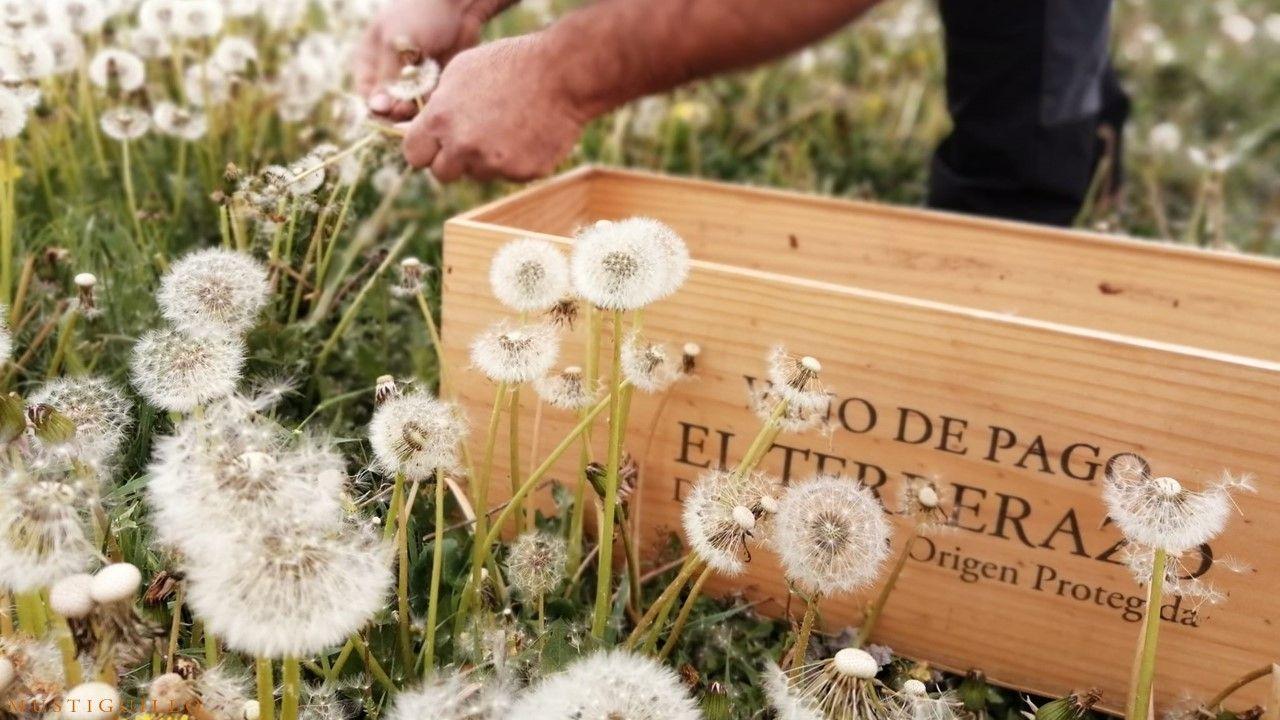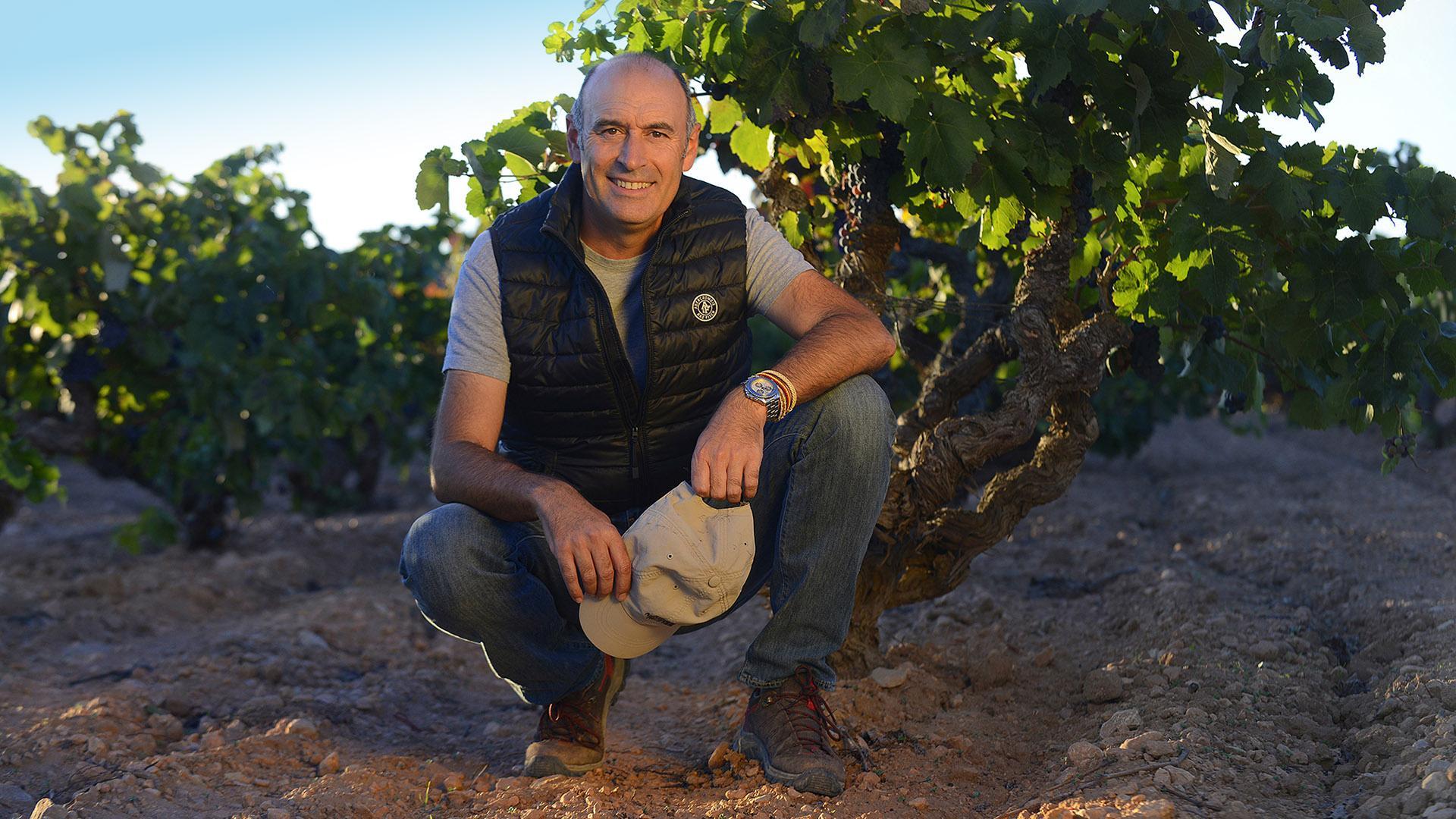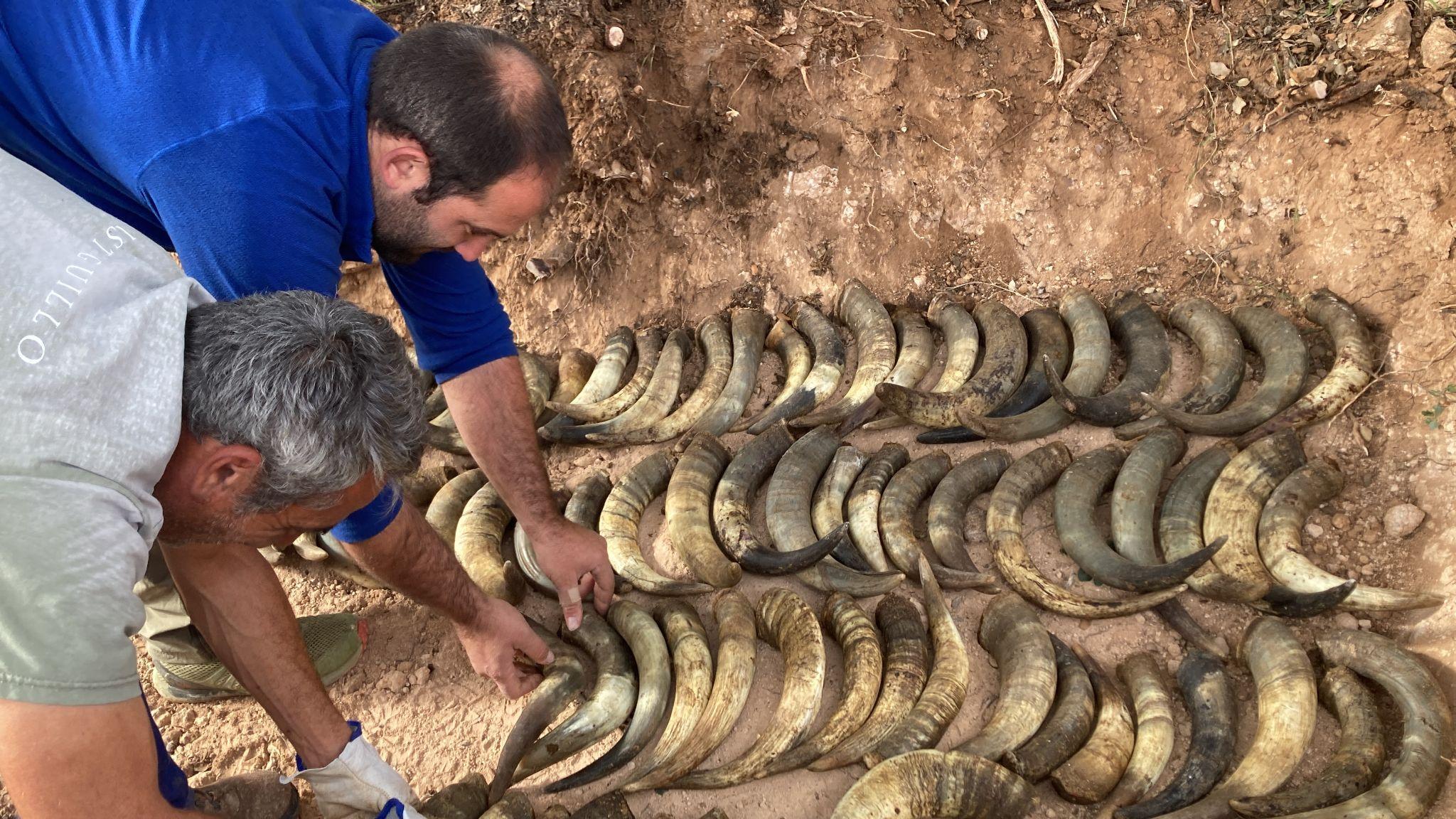Mustiguillo is a family winery located in the Valencian highlands on the El


Terrerazo estate Here, vines grow in a unique microclimate equally influenced by the nearby mountains and Mediterranean sea, making Mustiguillo unlike any other estate in the South. Focused on the recovery and celebration of native varieties such as Bobal and Merseguera, the estate is proudlyregionally-focusedandterroir-driven.Fromthoroughsoilstudiestocarefulorganicviticulture and explorations in biodynamic farming, the winery is at the forefront of new and exciting experimentsinSpanishwine.

SINCE�2004
KEY�FACTS
CLIMATE: Continental climate with Mediterranean influence. Avg. temperature 56° F (14°C), precipitation 17 in. (438 mm)
ELEVATION:�El Terrerazo 2,690 ft (820 m), Finca Calvestra 3,018 ft (920 m)
SOILS: El Terrerazo: calcareous soils of dolomitic origin, sandy-loam texture Finca Calvestra: limestone, silty-sandy texture of alluvial origin, small plot with marls

CLASS: DOP Terrerazo
HISTORY
Mustiguillo was founded on estate built in the 19th century and acquired by the Sarrión family in 1970. Yet, it's not until Toni Sarrión left his career in business administration and dedicate himself to winemaking that Mustiguillo as we know it today took shape. Mustiguillo is the pioneer and current benchmark for quality Bobal. In 2004, Quincha Corral 2001 was the first 100% Bobal wine rated by Robert Parker (95 points), while Decanter recognized Finca Terrerazo in 2014 as the best Spanish wine under 25£. In 2019, Mustiguillo celebrated the centenary of Terrerazo 1919, the first vintage produced at the estate and documented at the time by famed enologist and agricultural engineer Rafael Janini.


VINE: 264 acres (107 ha) across 47 plots
KEY�VARIETALS:�Bobal, Merseguera






ECO: EU certified organic. Elimination of all plastics in warehouse and packaging
INNOVATE: Conducting soil analysis, experimenting with biodynamics and sustainable practices like using sheep and their own compost to fertilize vineyards

Mustiguillo practices 100% organic viticulture, with emphasis on conserving the flora and fauna of the environment. To encourage soil health, they use natural compost of manure with pulverized pruned leaves and canes, as well as soil treatments such as tillage in alternate rows and vegetable cover crops. The cover crops are mixed (spontaneously mixed with fescue seeds, bromus and vetch) and defined according to the plot, variety, type of wine and winter rainfall. This helps encourages the vines to compete for resources.
TERROIR

The vineyards are located 63 miles (100 km) inland from the Mediterranean on the western edge of Valencia province.

Pago El Terrerazo and Finca Calvestra sit at 2,690 ft. (820 m) on the edge of the Sierra de Negrete, where the Castilla highlands reach the border of Valencia. Here, the extreme continental climate is gradually influenced by the milder Mediterranean conditions, resulting in high oscillation of diurnal temperatures (+-68ºF, 20ºC).

El Terrerazo rests on a limestone layer of Dolomitic origin. The soils are generally homogeneous, but include loamy patches with remarkable alkalinity, or pockets of sand. Toni Sarrión prioritized understanding the soil composition from the beginning, opening test pits to observe each plot and identify those with the potential for single-parcel expression, like Finca Calvestra Margas.



GOOD�TO�KNOW
In 2010, DOP El Terrerazo became the first single estate denomination in the Mediterranean region.

VITICULTURE�&�WINEMAKING

NATIVE VARIETIES
Mustiguillo focuses on expressing origin by working with native grapes like Bobal and Merseguera, believing that these grapes best transmit a genuine sense of place. Before the efforts of Mustiguillo, these varieties were largely underrated and seen as more suitable for bulk production.

LOW YIELDS
Bobal and Merseguera are naturally vigorous, productive varieties. Toni Sarrión employed many techniques to lower yields; bunch thinning, cover crops and dry farming were among key options to successfully cultivate high-quality grapes.
LOW INTERVENTION
Mustiguillo believes low intervention winemaking is the key to crafting the terroir-driven wines that will best express the character of their pagos. Parcels are fermented separately, exclusively with native yeasts and free-run must. Avoiding over extraction, gentle racking by gravity and use of neutral vessels like old oak or concrete for maturation will preserve the elegance and Mediterranean flavors.
Agingpotentialisone of Finca Calvestra’s virtues. This rare quality for a Mediterraneanwhite wine results from carefulwinemaking and Merseguera’s lowpH.Thewine’s typicity starts to show from the fourthyearonwards.
How�is�the�terroir�reflected�in�the� wines�of�Mustiguillo?
The terroir of Mustiguillo is perhaps best understood through their Bobal wines. The fruit of Finca Terrerazo is marked by the extreme climate, high elevation and its old vines, giving it a distinctive Mediterranean character, intense color and balanced acidity.

Old-vine Bobal is planted among groves of pine, oak, and olive, as well as rosemary, fennel, and thyme that tinge the fruit.
The expression of the limestone soil is noticeable in a slight chalky sensation on the palate, a savoriness and a vertical nose, resulting in a long, elegant wine.

Singularities�of�the�Winery
Their pagos El Terrerazo and Finca Calvestra, are a viticultural benchmark for Bobal and Merseguera. Toni Sarrión has worked to study all aspects of each individual plot individually, with a persistent curiosity to understand the estate’s terroir.

Why�is�Mustiguillo�a�Grandes�Pagos�de� España�winery?
Committed to respecting the origin and typicity of their wines, Mustiguillo joined GPE to promote visibility of their unique terroir. Mustiguillo has found a home with the other GPE wineries, where all work to learn more about their land, vines and the surrounding environment.

MUSTIGUILLO�PORTFOLIO:

Quincha Corral, Finca Terrerazo, Finca Calvestra Margas, Finca Calvestra, La Garnacha, Mestizaje Blanco, Mestizaje
Finca�Terrerazo
DOP El Terrerazo
Varieties
100% Bobal
Vinification
Maceration, fermentation and 18 months aging in 35
HL and 50 HL French oak vats. Only free-run wine is aged
Good�To�Know
Fruit from two single plots, one planted in 1945 and the other in 1970
Finca�Calvestra
Vino de España
Varieties
100% Merseguera
Vinification�



6 hours cold maceration. Fermentation and aging in 225 and 500 L acacia barrels with native yeast. 11 months aging on fine lees
Good�To�Know
Vineyard altitude 3,018 ft (920 m). Merseguera is grafted on old, dry-farmed Bobal vines
BODEGA�MUSTIGUILLO Ctra. El Terrerazo, 330 Km 195 46300 Utiel Valencia BODEGAMUSTIGUILLO.COM �����BODEGAMUSTIGUILLO Contact:�Luis�Miguel�Pérez l.perez@bodegamustiguillo.com LEARN�MORE
















 Winemaker: Toni Sarrión
Winemaker: Toni Sarrión
















